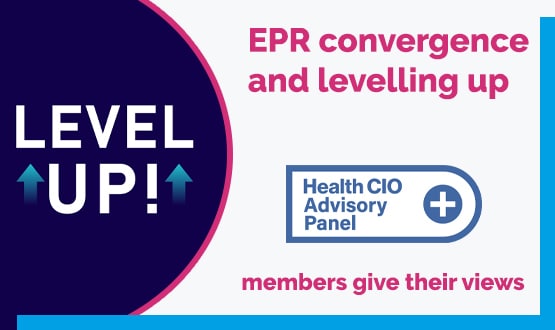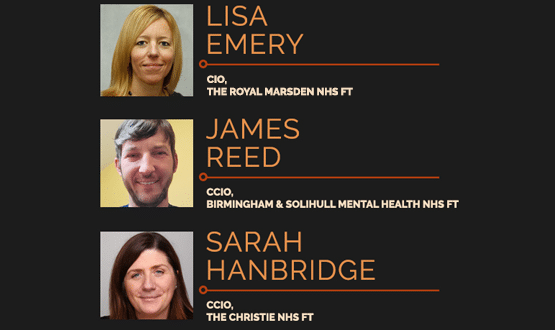Meaningful use, UK
- 24 March 2014

Whenever I have attended the HIMSS conference in the US, I have come away inspired by the concerted efforts of the American health system to improve care through the ‘meaningful use’ of electronic health records.
Meaningful use is a nationwide programme, set up under the Obama administration to reward organisations and individual clinicians for adopting and using electronic health records.
It’s worth $27 billion over ten years, and to qualify for payment it is necessary to meet targets set within a measurement framework. The meaningful use programme is in its third year of operation and has three stages.
Stage 1 covers basic targets for EHR use, while stages two and three cover targets aimed at providers that are ready to adopt advanced clinical functionality, such as clinical decision support and patient portals. The later stages also require more systemic of those areas identified in Stage 1.
It is interesting to see that meaningful use has been extended in some, but not all, US states to allow more providers to join the schemes.
From the data published at this year’s HIMSS in Orlando, things seem to be taking off. Adoption rates by providers have noticeably improved since the scheme started, while trailblazing hospitals are now starting to move towards the more advanced stages.
The other benefit from the US approach is that all EHR systems providers are required to include functionality to make sure that meaningful use can be monitored at organisation and clinician level.
This is achieved through an accreditation process with specific standards and clearly defined metrics for suppliers.
Needless to say, those systems that are compatible are winning the new business, while there is evidence that many providers are looking to switch vendors in order to improve their ability to achieve payments.
Once I had worked my way through the detail of the meaningful use framework, it became abundantly clear that what has been developed is a powerful set of incentives to help clinicians use the systems and to measure the benefit they provide.
Pretty impressive. Yet there is still a large body of clinicians that remains to be convinced that EHRs can actually help in the practice of medicine.
How can we learn from this?
My trust is in the final stage of an EHR procurement. This has been a joint tender with two other trusts in the south west region and will have taken12 months when completed.
It has been run under the guidance of the Southern Acute Programme, and culminated in a 21-day clinical evaluation, in which more than 60 clinicians assessed the ‘usability’ of the shortlisted vendor systems on offer.
Our efforts are now turning to the clinically owned ‘vision’ or ‘blueprint’ for how we want the organisation and the individuals working in it to change, so that we improve patient outcomes and efficiencies.
As part of this blueprint we are looking to create a local ‘meaningful use’ framework with a clear line of sight to the benefits set out in the EHR business case.
To be effective, this is likely to require individual level measurement so that each nurse, doctor, and allied health professional can be tracked to assess the benefit.
It will also need to adapt as we start to bring in the various levels of advanced functionality, such as clinical decision support and e-prescribing.
The Clinical Digital Maturity Index that EHI Intelligence published recently has proved useful in this exercise, providing a framework through which to look at how we can improve the ways in which we currently work.
Our thoughts are now beginning to take shape, but at this point, when we are engaging with our clinical body, we have as many questions as we do answers. For example:
- What will I be doing differently in using an EHR?
- How will you measure me on that?
- How will you support me in using the system once I have been trained and it is ‘switched on’?
- How will that benefit the patient?
- How will it benefit me in my clinical practice?
- How will the performance framework be managed?
These are all valid questions that need answering before we have a framework in place that the vast majority of clinicians in the organisation can sign up for.
Even so, we are now getting to the point where we have a clear roadmap for what needs to be done to develop this local meaningful use programme. This includes work to:
- Define our team level benefits
- Set baselines, and
- Design the ongoing support mechanisms to help clinicians make the best use of the EHR.
We also know that this will go beyond the immediate ‘go-live’ phase and will need to be embed into workforce and staff development processes.
Clinicians have indicated what information they will need from the electronic record at the point at which we switch-on the EHR and thereafter, ideally in a real-time view showing how each clinician and team is progressing.
This will help us target support and judge when we are ready to move to its next level of benefits. It is also proving helpful in creating a view of the ‘common good’ that will come from using the EHR.
What might a UK meaningful use scheme look like?
After health secretary Jeremy Hunt issued his call for a ‘paperless’ NHS last January, there was a lot of discussion about what this would look like, and whether the UK should introduce some kind of meaningful use scheme itself.
In the event, NHS England published guidance on an integrated digital care record in July that argued trusts should use their own, local judgment in developing meaningful use.
At this stage, I find myself in agreement with this. I am pleased that there is recognition for meaningful use, but that there isn’t a push for a UK-wide framework just yet, because the journey of change is very much a local one.
I don’t believe that my trust will have a ‘right answer’, but we do have the makings of a framework that is focused on what will give us the greatest local benefit.
Just having the meaningful use debate locally has proved very useful in engaging clinical teams with the EHR before it arrives. There is benefit in that.
About the author: Mike Jones has been a chief information officer for seven years, working across all sectors of the NHS, and is currently chief information officer at North Devon Healthcare NHS Trust.
His professional interests include enterprise architecture, service excellence and the development of a framework for measuring meaningful use of electronic health records that works for the UK public sector.
About Northern Devon Healthcare NHS Trust: Northern Devon was one of the first trusts in England to integrate acute and community healthcare services, adding adult community health and social care services in 2008.
It works across an area of 1,300 square miles, centred on North Devon District Hospital, a network of 17 community hospitals, and nine integrated health and social care community clusters.




